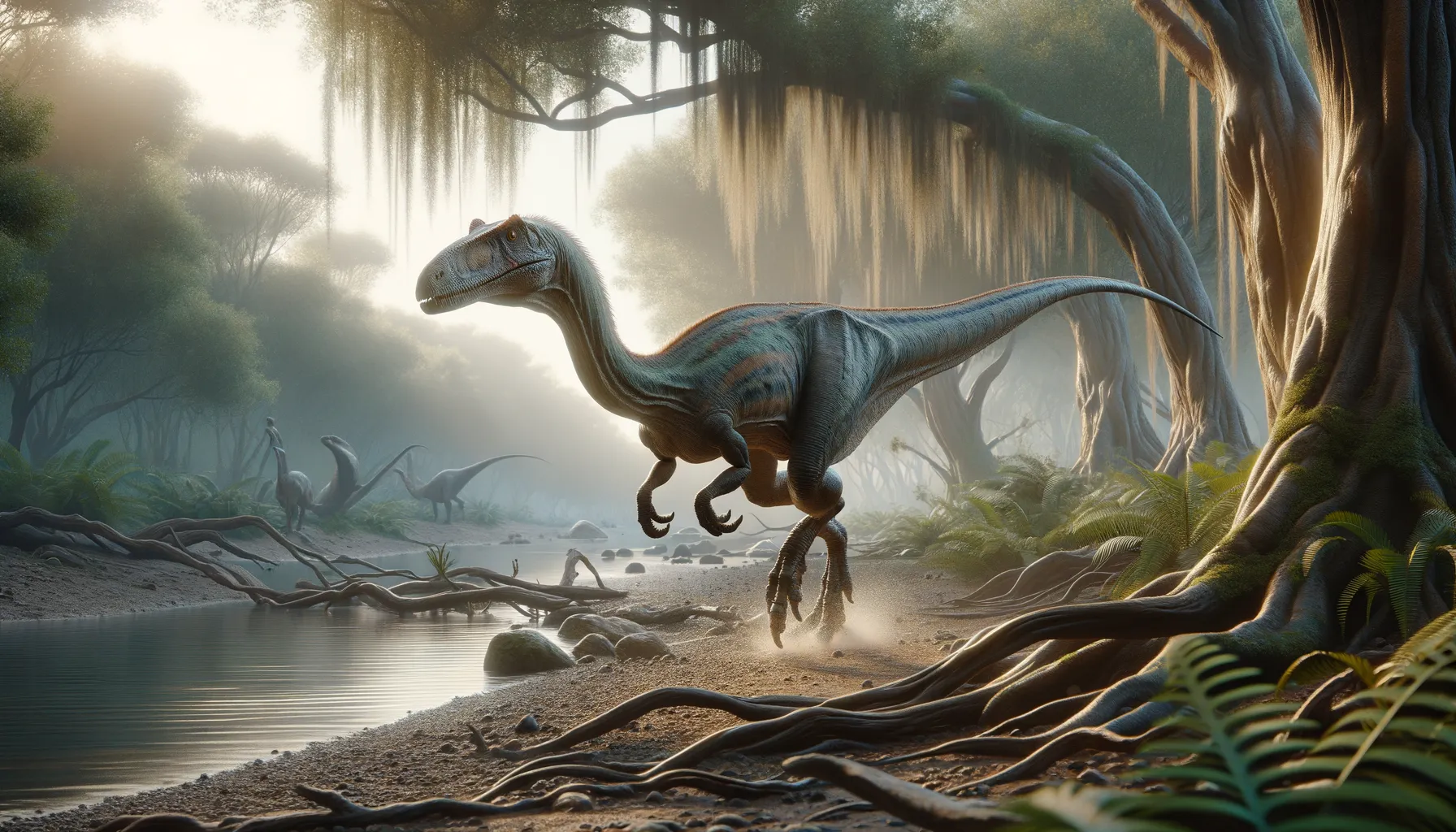
Coelophysis
Swift predator from the Triassic era.
Period
Triassic
Length
Around 3 meters long.
Height
Approximately 1 meter at the hip.
Weight
About 30 kilograms (66 pounds).
Coelophysis is one of the earliest known dinosaur genera, characterized by its slender body and carnivorous diet. It thrived during the Late Triassic period and is notable for its bird-like agility and speed. Fossils found primarily in North America reveal that Coelophysis hunted in packs, adding to its efficiency as a predator. This dinosaur represents a crucial stage in the evolution of theropods, bridging the gap between ancient reptiles and modern birds.
Diet
Coelophysis was a carnivore, preying on small animals such as insects, reptiles, and other small vertebrates. Its diet likely included anything smaller than itself, demonstrating its adaptability as a hunter.
Hunting
This dinosaur's speed and agility allowed it to chase and catch prey efficiently. Evidence suggests that Coelophysis hunted in packs, which would have increased their success rate in capturing prey.
Environmental challenges
During the Late Triassic, Coelophysis faced challenges such as fluctuating climates and competition for resources. This period saw shifts in vegetation and predator-prey dynamics as ecosystems evolved, testing the adaptability of Coelophysis. These challenges may have driven evolutionary changes, contributing to its success and survival.
Speed
Fast and agile for its size.
Lifespan
Possibly up to 20 years.
First discovery
Discovered in 1889 in New Mexico.
Fun Facts
- Coelophysis was a small, carnivorous dinosaur that lived around 210 million years ago during the Late Triassic period.
- It was one of the earliest dinosaurs to exist and is considered one of the most primitive theropods.
- Coelophysis is known for its slender, agile body, making it an efficient hunter.
- Fossils of Coelophysis have been found primarily in what is now the southwestern United States, particularly in New Mexico.
- The name Coelophysis means 'hollow form,' referring to its hollow bones that made it lightweight.
- Coelophysis was not very large, reaching lengths of about 9 feet, which is similar to the size of a modern-day crocodile.
- There is evidence that some Coelophysis may have engaged in cannibalism, as fossils have been found with remnants of their own species in their stomachs.
Growth and Development
Coelophysis likely followed a rapid growth pattern, reaching maturity relatively quickly to ensure reproductive success. Juveniles might have been more vulnerable to predation, necessitating swift development into agile hunters.
Habitat
Coelophysis inhabited semi-arid environments with seasonal rainfall, thriving in a landscape filled with rivers and floodplains. These areas provided ample hunting opportunities and shelter in dense vegetation.
Interaction with other species
Coelophysis likely competed with other carnivorous dinosaurs and large reptiles of the era. It may have played a role in balancing the ecosystem by preying on small animals and being part of a larger food web that included rivals and scavengers.
Natural lifespan
Coelophysis might have lived up to 20 years in the wild.
Reproduction
Coelophysis likely laid eggs, using nests to protect their young. Parental care might have been limited, with hatchlings needing to rapidly develop and fend for themselves shortly after birth.
Social behaviour
Evidence suggests that Coelophysis might have lived and hunted in groups. This pack behavior could increase hunting success and provide protection against larger predators. Such social structures may have been essential for survival during challenging times.
Fossil locations
The most notable fossil discoveries of Coelophysis have been in Ghost Ranch, New Mexico. These sites have provided significant insights into its behavior and physical attributes. Additional fossils have been found in other areas of the southwestern United States.
